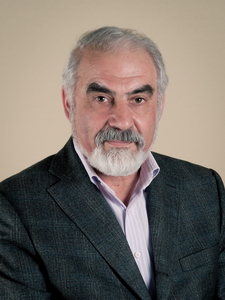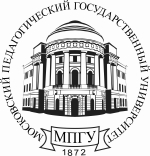
Prof. Gregory N. Goltsman
PI
- Download CV: .doc
- CV:
Gregory Goltsman received his PhD degree in radio-physics and ScD degree in physics of semiconductors and dielectrics from Moscow State Pedagogical University (MSPU), Moscow, Russia, in 1973 and 1985, respectively. Currently, he is Professor and Chairman of General and Experimental Physics Department, and also the leader of Radiophysics Research and Education Centre at MSPU, working with the group including more than 40 scientists. Dr Goltsman's long-term experience in solid state physics, radiophysics and microwaves has enabled him to make a number of significant contributions to physics of hot-electron effect in superconducting nanostructures, and to develop the infrared- and submillimetre-wave detectors with unprecedented characteristics. These detectors include hot-electron bolometer (HEB) mixers and nanowire superconducting single-photon detectors (SSPD). HEB mixers developed at MSPU represent the class of the most sensitive heterodyne detectors at frequencies well above 1 THz. In 2009, Herschel space observatory was successfully launched carrying the HEB receiver for frequency range of 1.4-1.9 THz. In turn, the SSPDs outperform any known single-photon detectors such as photomultiplier tubes and avalanche photodiodes in terms of speed, timing resolution and dark counts rate. Owing to their superior performance, SSPDs are successfully used for single-photon source characterization, quantum information experiments, and quantum cryptography.
Dr Goltsman is also involved in the Russian Space Agency programme Millimetron, which is an international space observatory with a 10-m deployable primary mirror cooled to 4 K. The observatory will cover the wavelengths from centimetre- to submillimetre-length and will allow performing astronomical observations with highest sensitivity (down to nanoJansky level) in a single dish mode, as well as observations with high angular resolution as part of the Eqrth-space interferometer.
Gregory Goltsman has extensive experience in industry where he extensively contributed to the development of small innovative hi-tech businesses. In 1989, he co-founded the research and development centre Scanex. Scanex combines the best achievements of Russian higher education and scientific schools and is the leading Russian company on the market of remote sensing that offers a complete set of services ranging from acquisition to processing of the Earth's real-time images taken from space. The founding of Scanex was followed in 2005 and 2006 by creation of two spin-off companies of the Radiophysics Research and Education Centre: Scontel and Miros. For the numerous customers from all over the world working in universities, laboratories and research centres, Scontel offers ready-to-use ultrasensitive and ultrafast superconducting receivers covering frequencies from the visible to the far-infrared for applications to advanced photonics. SCONTEL owns state-of-the-art equipment for fabrication and testing of the superconducting and semiconductor devices, and carries out innovative research to improve the performance of the detectors and develop new types of receivers. The other company, Miros, develops equipment for fast separation of ores with the use of microwave techniques. This method has proved to be more efficient and safe compared to the standard X-ray scanning technique.
Gregory Goltsman has over 250 publications in leading scientific journals and holds 8 patents. His articles cited of above 5500 times, and his h-index is equal to 36. In 2009 he received Van Duzer Award from IEEE Council on Superconductivity for his contribution to applied superconductivity.







